NYC’s Forgotten ‘War on Christmas Trees’
Discover how an obscure holiday crackdown affects festive street vendors today!


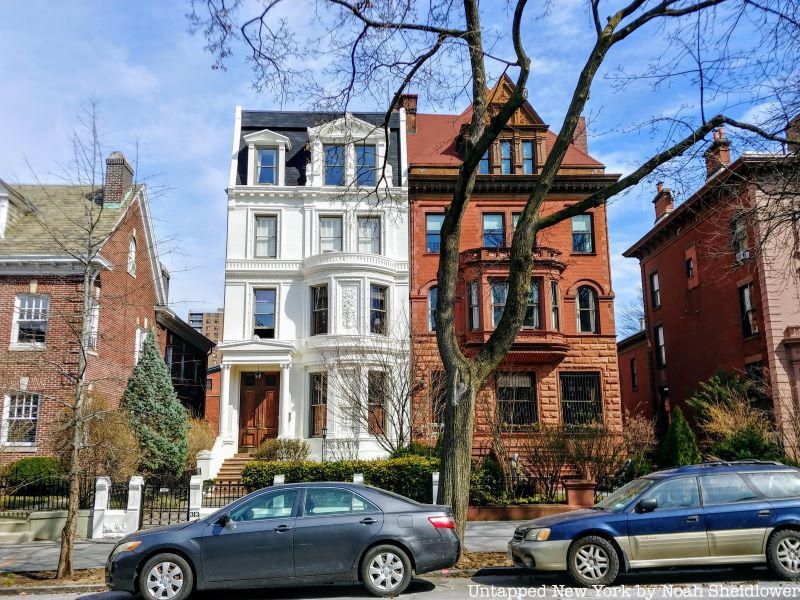
Clinton Hill is a quiet area of north-central Brooklyn to the east of Fort Greene and west of Bedford-Stuyvesant. The area is perhaps known best for housing the Pratt Institute, recognized for its architecture and design programs, as well as its historic campus and public art installations. Once a working-class community, Clinton Hill developed in the late-1800s as a prominent destination for wealthy Manhattan residents looking to escape the island, many building lavish mansions that gave Clinton Hill the nickname of Brooklyn’s “Gold Coast.” Since then, the area has blended old and new, prominently displayed through the newly designed Lefferts Place Mews finished in 2013 but inspired by the area’s historic townhouses. Here is our guide to 10 secrets of Clinton Hill!
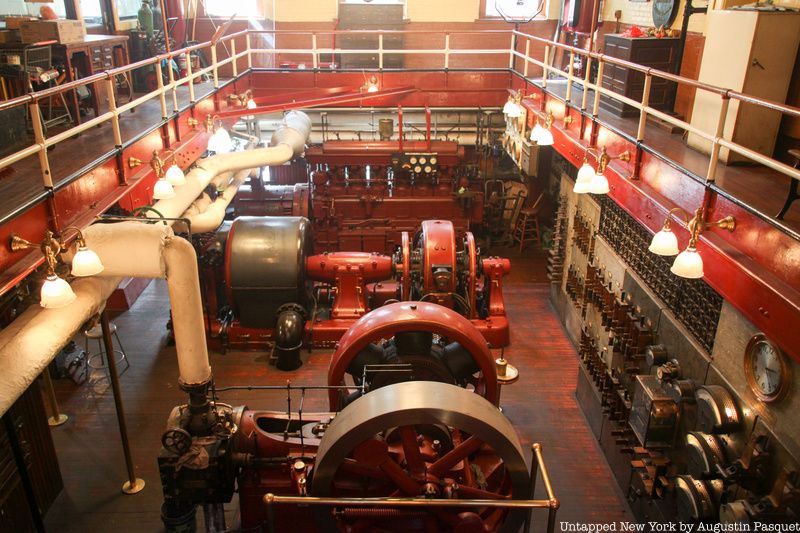
In the middle of Clinton Hill sits the 25-acre Pratt Institute campus, featuring many landmarked buildings amid open green space and plenty of public sculptures. On the first floor of East Hall is the Pratt Institute steam engine power plant, the oldest continuously operating, privately-owned steam-powered electrical generating plant in the country, The steam generators were made by the Ames Iron Works and installed in 1900, continuing to power all of the Pratt campus. The wood paneling in the lower Engine Room dates to 1887, and incandescent lights still illuminate the space.
Unlike the rest of Pratt’s campus, designed by Lamb & Rich, the steam engine power plant was designed by William Windrim. The power plant was not yet operational when the school opened, but only 15 students registered for the fall 1887 semester; everything was ready by January 4, 1888. The Ames Iron Work generators were installed in 1900 to add capacity to the expanding campus, and additional revisions to the power plant were added with the construction of new buildings. The steam engine power plant was designed with a wraparound interior balcony for viewing. Chandeliers that were once in the Board of Directors room at the Singer Building, the tallest building in the world in 1908 — and the tallest building ever to be demolished — were added to the space.
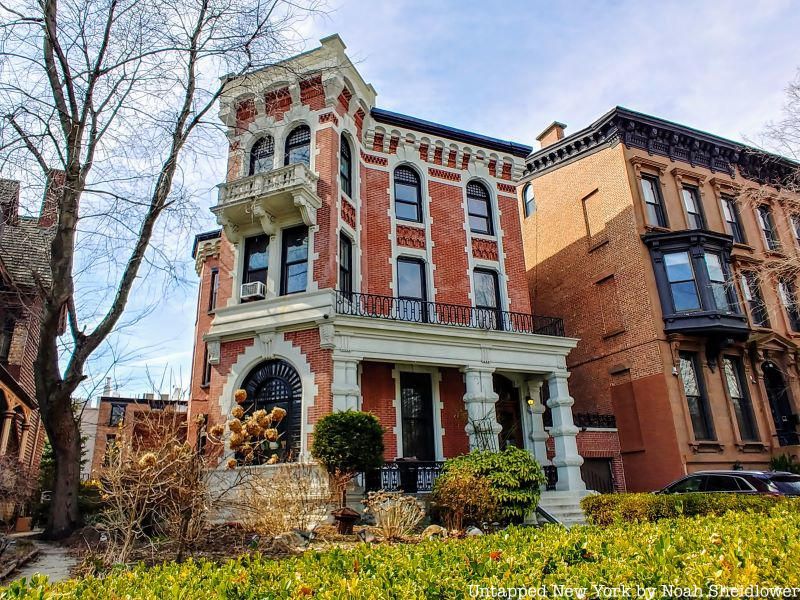
Fifth Avenue was not the only part of the city to have a “Millionaires’ Row” of exquisite and lavish Gilded Age homes. Clinton Hill featured plenty of mansions built in the early 1900s, some dating back a few decades earlier, including Charles Pratt’s mansion at 232 Clinton Avenue — now a part of St. Joseph’s College. Pratt built additional mansions for his sons as wedding gifts. The area quickly became known as Brooklyn’s “Gold Coast” after many wealthy Manhattan residents moved to Brooklyn. Clinton Avenue was one of the wealthiest streets in the entire city at the time, though apartment buildings replaced many mansions in the early 1900s, with some converted into rooming houses and others destroyed (by none other than Robert Moses).
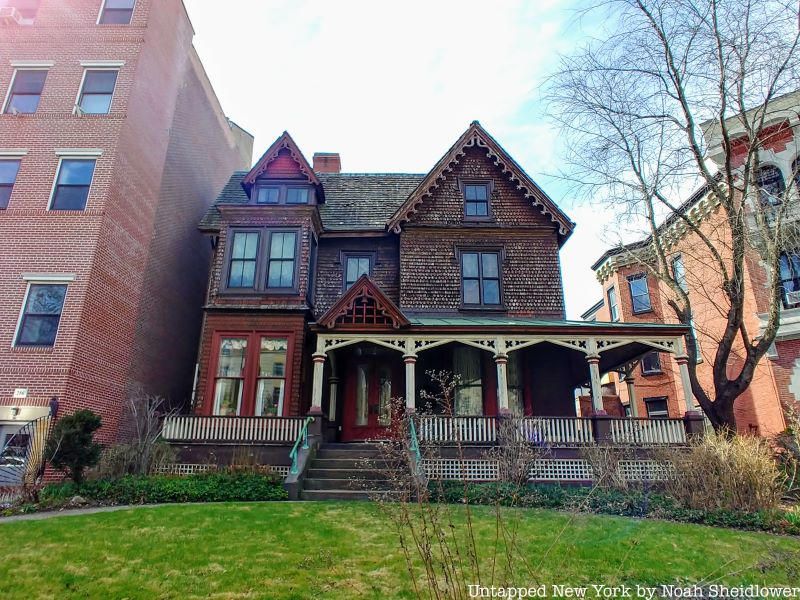
Some mansions from the 1870s and 1880s that still stand today are included in the Clinton Hill Historic District, joined by many Beaux-Arts and Italianate rowhouses. 136 Clinton Avenue is perhaps the oldest mansion still standing, dating back to around 1835 and also known as the Lefferts-Laidlaw House. 457 Clinton Avenue (1860s) was built in the Second Empire style, while 313 and 321 Clinton Avenue both are Neo-Grec. 278 Clinton Avenue is an eclectic Victorian home from the mid-1880s, while 241 Clinton Avenue has English Arts & Crafts influences, but is predominantly in Romanesque Revival style.
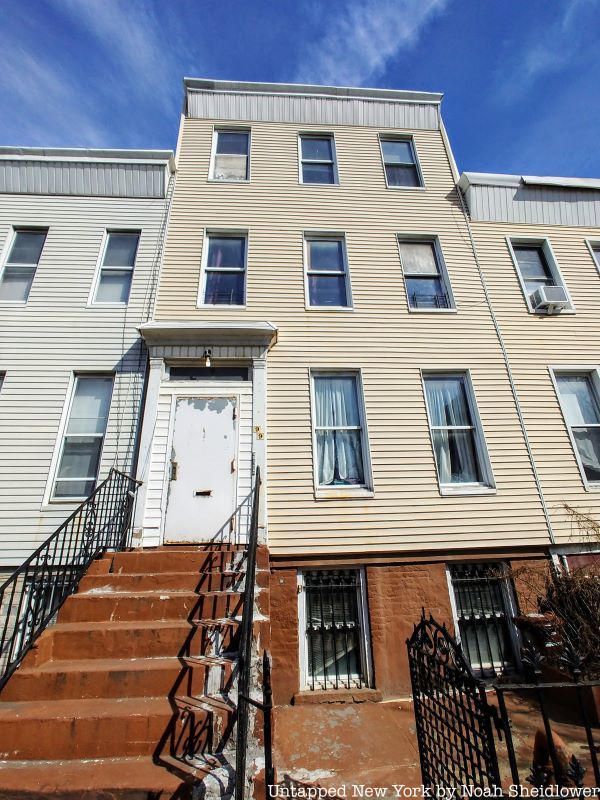
Less than two blocks from the Brooklyn Navy Yard sits an unassuming aluminum-sided townhouse that hides a rich history. 99 Ryerson Street was where Walt Whitman lived alongside his brother and parents from 1855 to 1856, when he was finishing up and publishing his collection Leaves of Grass. While living at this address, he also worked on the second edition of Leaves of Grass, which includes the first version of the poem “Crossing Brooklyn Ferry.” All of Whitman’s other homes in Brooklyn have been demolished. This home was built for mechanics and tradesmen, representative of the type of house Whitman and his family would have lived in.
Despite Whitman’s contributions to New York culture, the New York City Landmarks Preservation Commission declined to designate the home in 2017. 99 Reyerson Street has a third floor that was not there in 1855, instead added years later, and because the family lived there for just six months according to the commission, no part of Whitman’s epic poem was written in the home. However, Whitman himself wrote that he lived there for a year, and he needed just a title page to file for copyright law, meaning he likely wrote much of the text while in the home. Ralph Waldo Emerson also visited the home in November 1855. 99 Ryerson Street is also an important LGBTQ site since Whitman himself was gay, and landmarking the building would make it one of just a few LGBTQ landmarks in New York City.
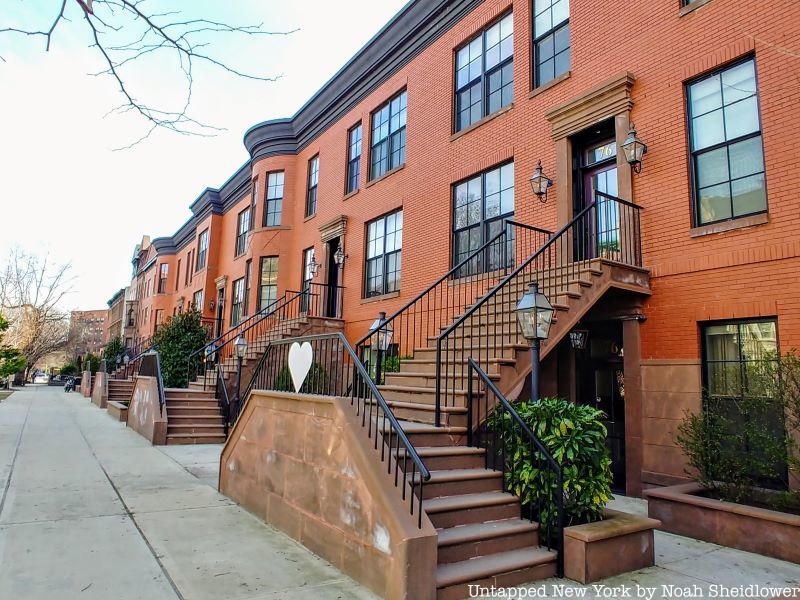
When Clinton Hill was first developing, many referred to it simply as “The Hill” because it had a maximum elevation of 95 feet, the highest in this area of Brooklyn. Many believed that because of its elevation, there were health benefits to living in Clinton Hill as opposed to other neighborhoods nearby.
This was because many people believed that diseases were more prevalent in areas of lower elevation. Though initially a working-class community, many mansions were built in the early 1900s, perhaps in part because of this belief.
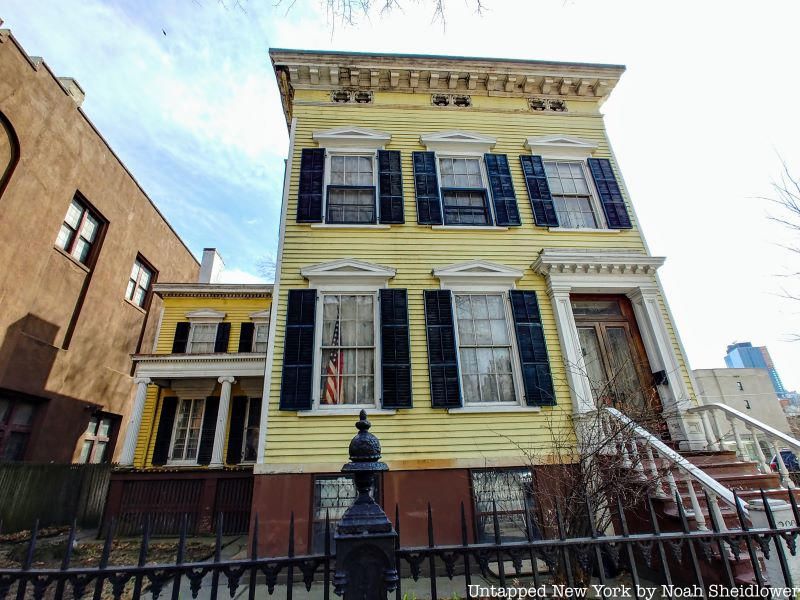
200 Lafayette Avenue, also known as the Joseph Steele House, is a Greek Revival building that dates back to 1853 (though some think earlier around 1845), with some elements perhaps much older. It is one of the oldest homes in the neighborhood, dating back from when Clinton Hill was just becoming more developed from farmland to residences. It is believed that the small wing is from an earlier Federal-style building, with the main house being built around it. The wooden mansion’s exterior was never altered, making it one of the neighborhood’s architectural gems.
The yellow home’s original owner was Joseph Steele, a resident of Brooklyn Heights. It was first sold to Joseph A. Brick, who was the first president of Brooklyn Union Gas. Nearly 50 years later, it was then sold to Joseph Skinner, whose family still owns it today. In 1968, the home was awarded landmark status.
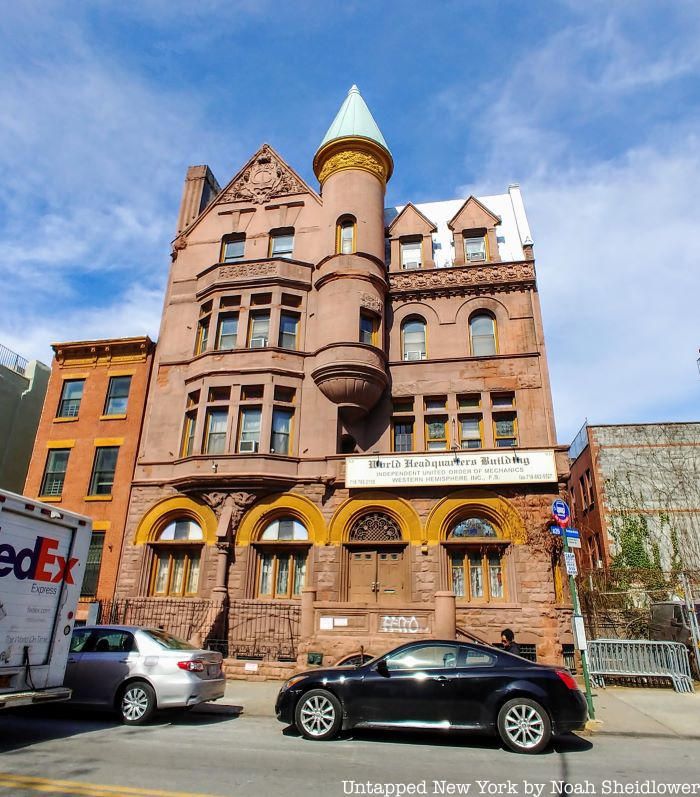
At 65 Putnam Avenue lies the Mechanics Temple, which previously housed the exclusive Lincoln Club, Built between 1886 and 1889, the Queen Anne-style masonry building was built of Roman brick and brownstone with terracotta ornaments. The building is notable for its four distinctive facade arches, and it was added to the National Register of Historic Places in 1983. It was designed by Rudolphe L. Daus, who designed the 13th Regiment Armory in Brooklyn and rowhouses and libraries in Brooklyn.
According to the Landmarks Preservation Committee report, the building is “one of a number of large, sumptuous clubhouses erected in Brooklyn in the last two decades of the 19th century, and it is one of the few to retain its architectural integrity.” The Lincoln Club was founded in 1878 by a group of Clinton Hill residents who wanted to advance the interests of the Republican party, though it dropped its political activities a year later. The club opened in the building in 1889, establishing stringent rules for admission and member behavior. Only 400 men could become members, and each paid an admission fee of $50 and annual dues of $40. The Club was dissolved in 1931, though the building still remains as it was in the late 1800s.
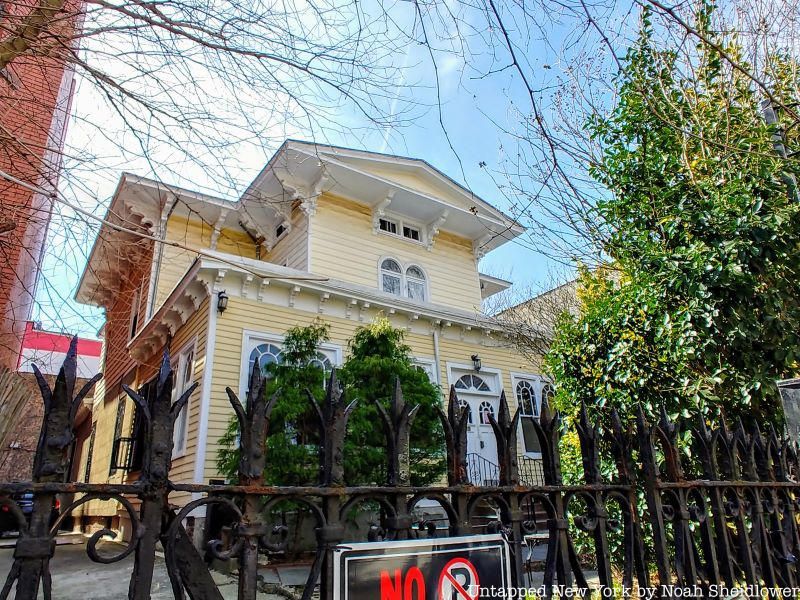
70 Lefferts Place, hidden behind a gate and large foliage, is an Italiante-style home also named for James W. and Lucy S. Elwell. James William Elwell was a longtime Brooklyn shipping merchant and member of the New York Chamber of Commerce who owned shipping firm James W. Elwell & Co. Elwell was also a philanthropist who donated over $3 million to institutions including the Graham Institute and Brooklyn Orphan Asylum. The home was built around 1854 alongside a flower conservatory, and it remained in the family’s hands until it was purchased by the Father Divine Church in 1939. The yellow home was put on the NRHP in 1986.
Most recently, the home became the primary base of the AllInOne Collective, a community of artists and activists founded in 2020. Prior to this, the historic home served as an illegal hostel that charged $25 a night. Now, the collective rents the entire building and was created by Audrey Banks, a painter and performance artist. The 22-room villa has attracted over 15 tenants, who range from digital artists to fashion models to data journalists. The basement functions as a gallery space for collective members and outside groups.
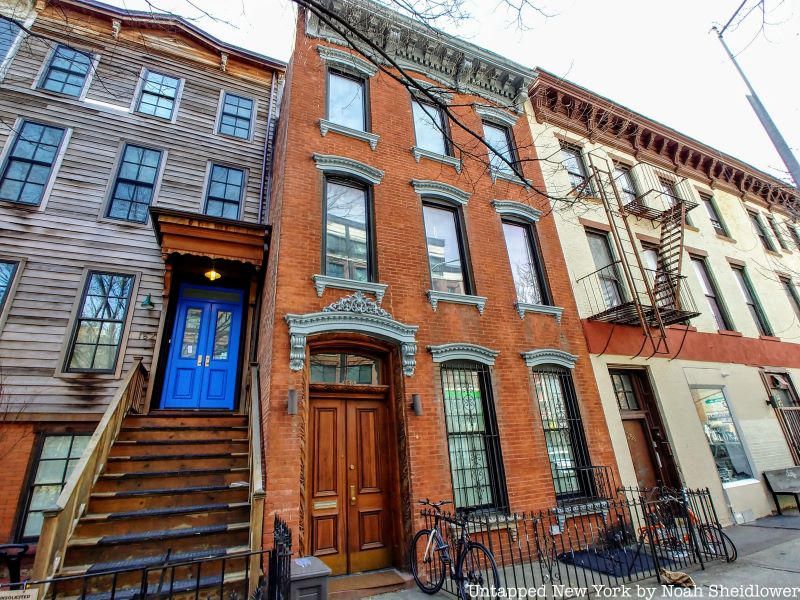
Clinton Hill has been home to many famous residents over the years, including the Notorious B.I.G., Letitia James, and Bowen Yang. Perhaps two of the most notable residents were Patti Smith and Robert Mapplethorpe, who shared an apartment at 160 Hall Street. The punk icon and her then-boyfriend photographer lived on the second floor in 1967, paying just $80 per month. The apartment dates back to 1901, featuring original wooden beams and pine floors, though much has been renovated. The townhouse went on the market in 2018 for $8,000 per month, 100 times more than what the couple paid.
Smith wrote of the apartment in her memoir Just Kids, “We had the entire second floor, with windows facing east and west, but its aggressively seedy condition was out of range of experience. Robert cut a deal with the landlord, agreeing to clean and paint it himself provided we pay only one month’s deposit, instead of the required two. The rent was eighty dollars a month. We paid one hundred and sixty dollars to move into 160 Hall Street. We regarded the symmetry as favorable.”
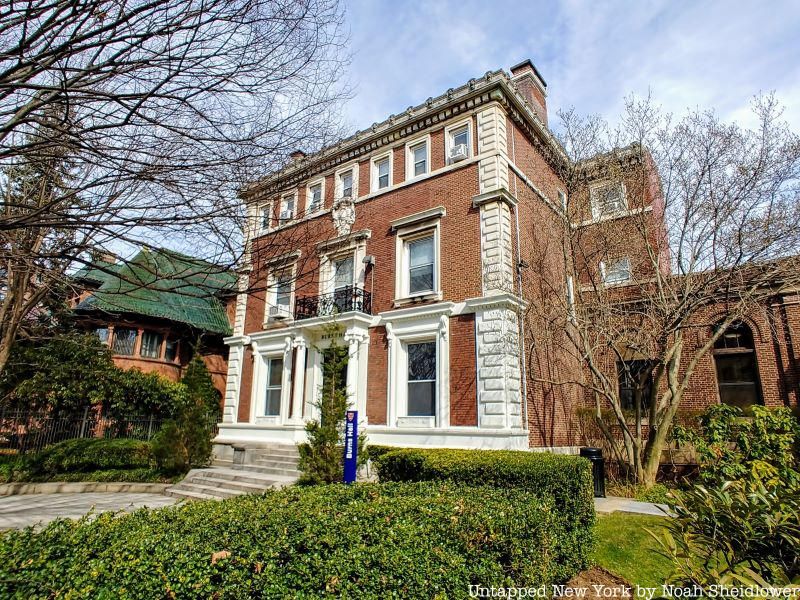
Though co-ed today, St. Joseph’s College in Clinton Hill was founded as a women’s college, the only one ever established in Brooklyn. It was founded by the Sisters of St. Joseph of Brentwood, originally starting on Washington Avenue before moving to 245 Clinton Avenue in 1918. There were just 14 graduates in the class of 1920. The college continued to expand, including a location in Patchogue in 1979 and new buildings on its Brooklyn campus, but it wasn’t until 1970 that male students would be admitted. The Long Island campus has about three times the enrollment of the Brooklyn campus today.
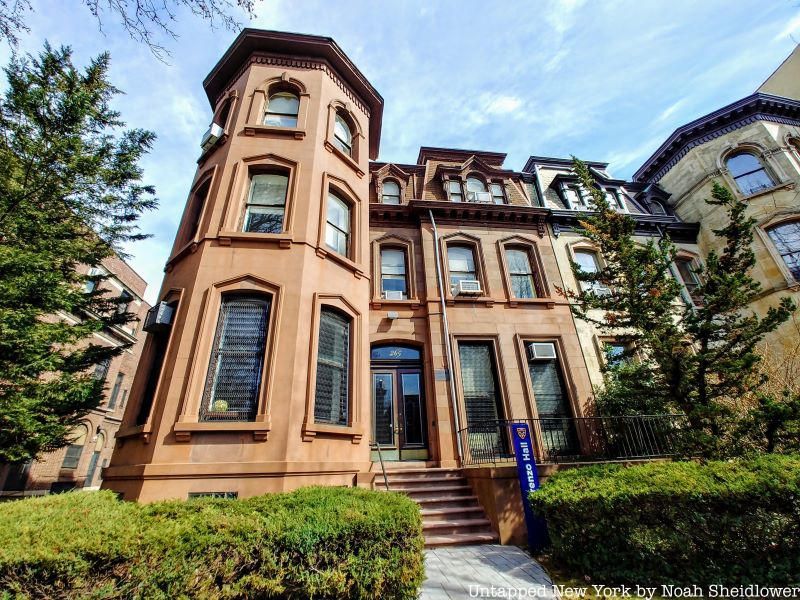
New York City and the nearby area have had their fair share of women’s colleges — Barnard College and Stern College for Women at Yeshiva University are among the only remaining ones. Manhattan used to have Finch College and New York Medical College for Women, and institutions like Hunter College and Marymount Manhattan College began as women’s colleges. The College of Mount Saint Vincent in Riverdale and Notre Dame College on Staten Island also began as women’s colleges.
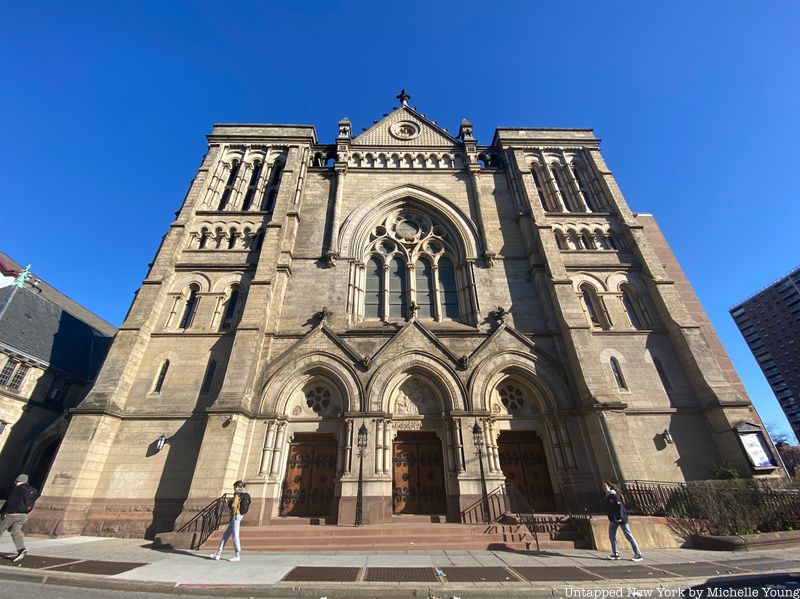
Clinton Hill has a high African American population of about 15,000, or about 42% of the neighborhood’s population. Many within this demographic are West Indian, some opening up Caribbean restaurants in the neighborhood or in neighboring Bedford-Stuyvesant. Parishioners at St. Mary’s Episcopal Chuch, a Gothic Revival-style building built in 1858 on Classon Avenue, are largely of West Indian descent. The Church was added to the NRHP in 1983 and features the 1892 Johnson Memorial Parish House.
Other historic churches in the area include Emmanuel Baptist Church, located on the northwest corner of Lafayette Avenue and St. James Place, built in 1881 in the Gothic Revival style by Francis H. Kimball. Kimball was known for the Empire Building and Manhattan Life Insurance Building in the Financial District. Clinton Avenue houses the Church of St. Luke and St. Matthew, built in 1888-1891 by John Welch in the Romanesque Revival style. Most of the windows in the nave were created by Tiffany, and the 1,500-seat church was erected on the grounds of the former Trinity Church built in 1835.
Next, check out the Top 12 Secrets of Fort Greene, Brooklyn!
Subscribe to our newsletter